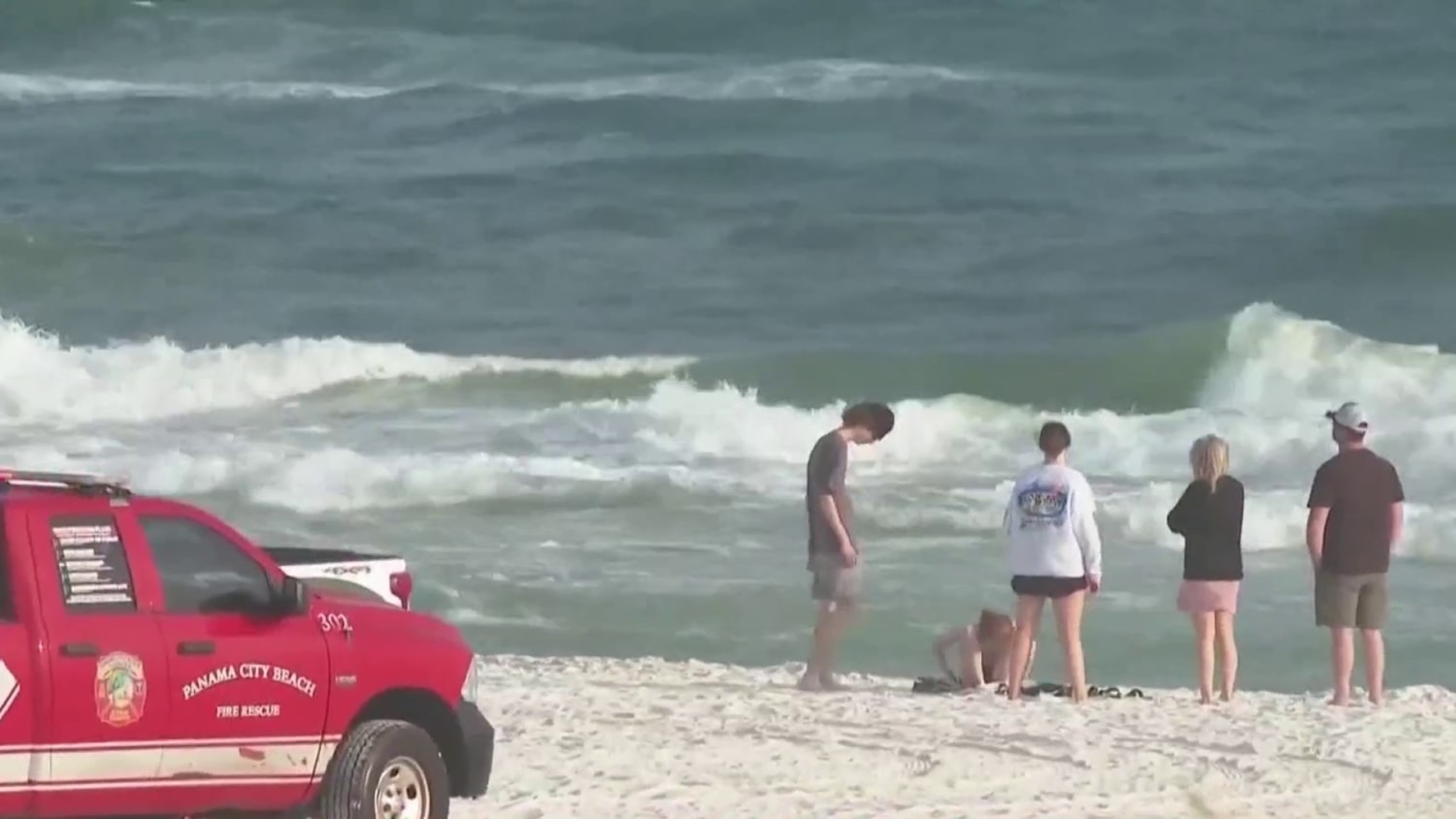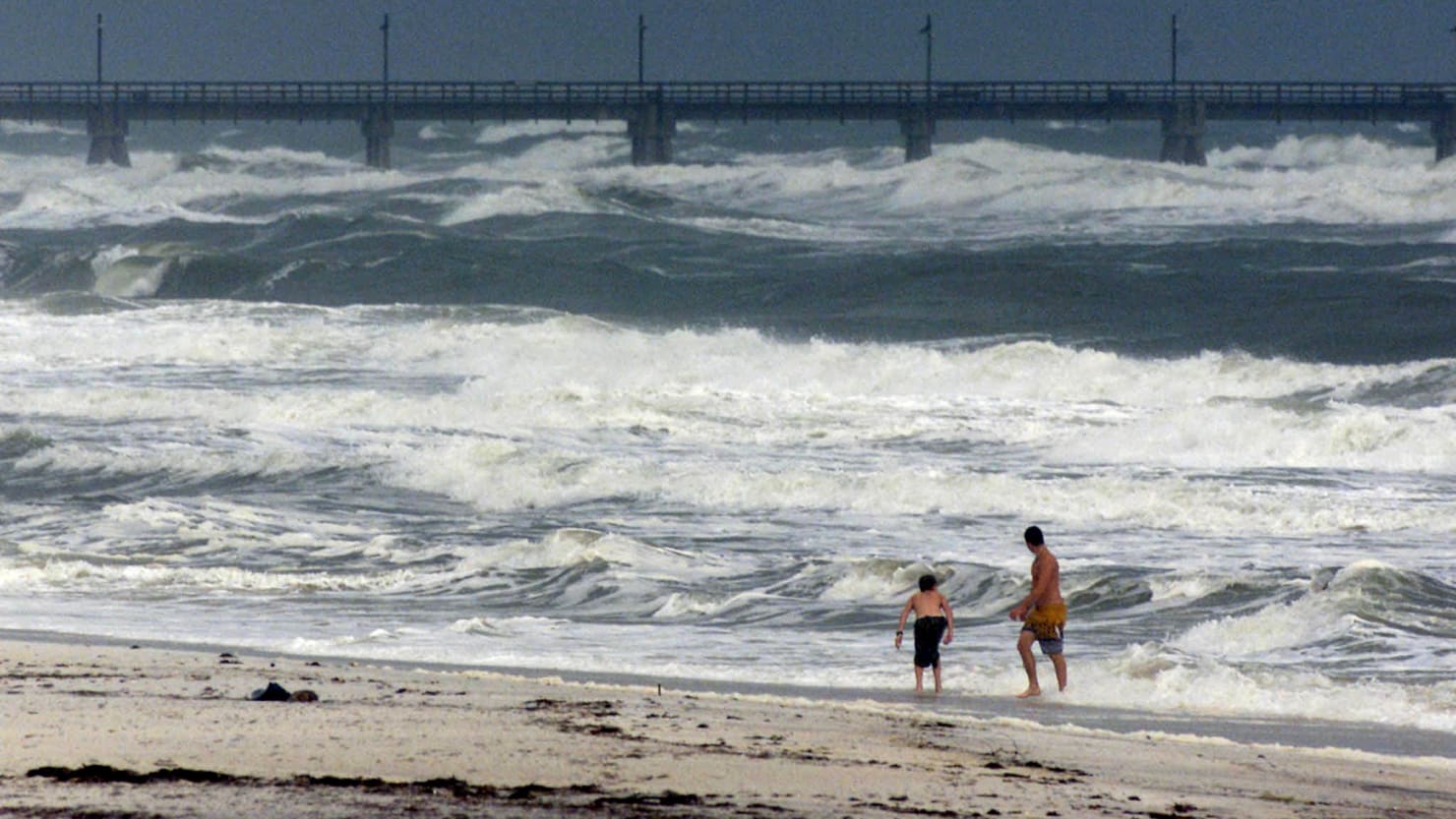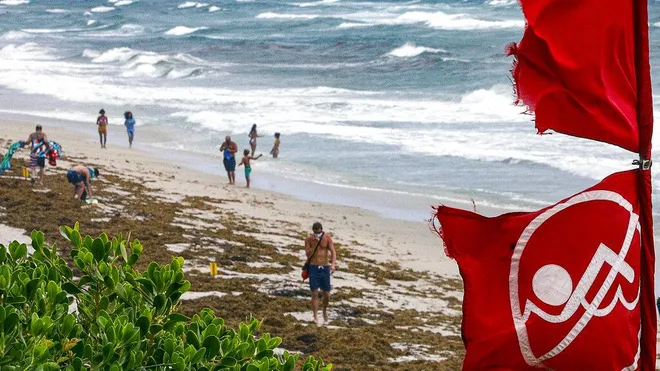“The double red flag situation is extremely concerning for us,” said Police Chief J.R. Talamantez. “I would rather have more officers on the sand as a presence out there to try and prevent people from drowning, than (those) officers looking for traffic infractions.”

Extreme Heat and High Rip Current Risk
Saturday’s forecast predicts temperatures reaching the mid-90s, with heat indices making it feel well into triple digits. According to the National Weather Service (NWS) office in Tallahassee, the weather will be “quite hot and muggy.” Despite the scorching heat, tourists should avoid swimming in areas with dangerous currents. The NWS has issued a high rip current risk through Sunday morning for all Bay and Gulf counties beaches, warning that “rip currents can sweep even the best swimmers away from shore into deeper water.”
Understanding Beach Flag Warnings
Beach flag warning systems use various colors to indicate the level of hazard present. A green flag signals low-hazard conditions, a yellow flag indicates medium-hazard conditions, one red flag signifies high-hazard conditions and two red flags denote very dangerous conditions. However, Panama City Beach and Bay County never display green flags, emphasizing that beachgoers should always exercise caution when entering the Gulf.
Local officials have clarified that the beach flags in Bay County reflect the strength of rip currents rather than the size of the waves. “Waves aren’t killing people here. Waves aren’t the hazard,” explained Daryl Paul, fire rescue beach safety director for Panama City Beach. “It’s rip currents that are the hazard, and that’s what we’re flying the flags for.”
Staying Safe in Dangerous Waters
Last year, Panama City Beach experienced the highest number of rip current drownings in the U.S., according to the NWS. Eight people died due to rip currents in this Gulf Coast community, accounting for nearly a third of Florida’s 30 rip current-related deaths. By contrast, five people died in New Jersey, and California, South Carolina, and Louisiana each reported three deaths from rip currents.
During the summer, popular beaches hide treacherous rip currents that can drag swimmers away from shore and exhaust them as they struggle to return to safety. The National Ocean Service estimates that thousands of people are rescued from rip currents annually in the U.S. In 2023, 91 people died from rip currents at U.S. beaches, an increase from the 10-year average of 74 deaths per year.

The NWS advises beachgoers to swim near lifeguards whenever possible. If caught in a rip current, it is crucial to remain calm. Swimmers should move parallel to the shore rather than toward it until they escape the current. Once free, they can then swim back to land. If unable to break free, they should face the shore and call or wave for help. As beachgoers flock to the shores to beat the heat, it is essential to heed these warnings and understand the grave dangers posed by rip currents. Staying informed and vigilant can save lives and ensure a safer beach experience for everyone.
